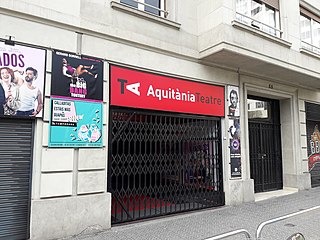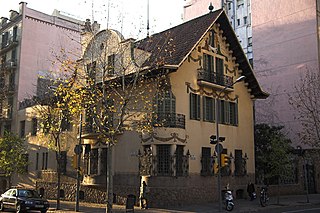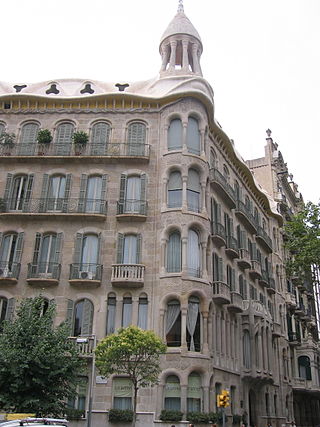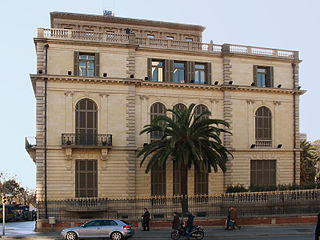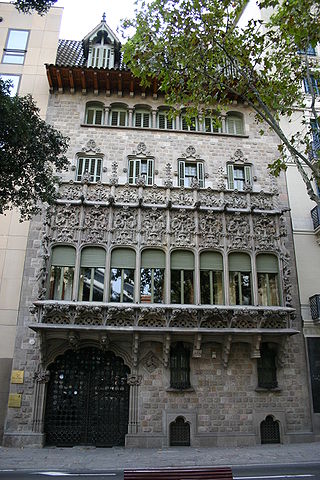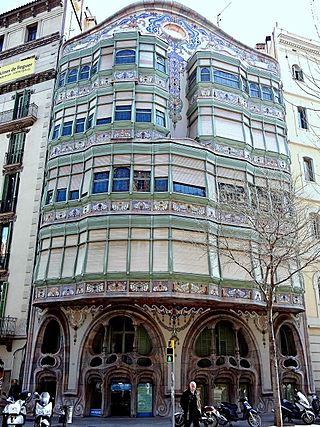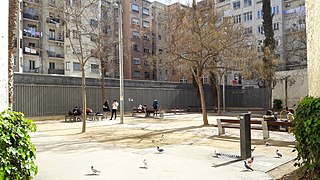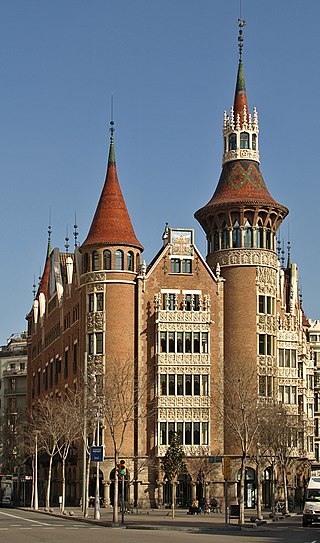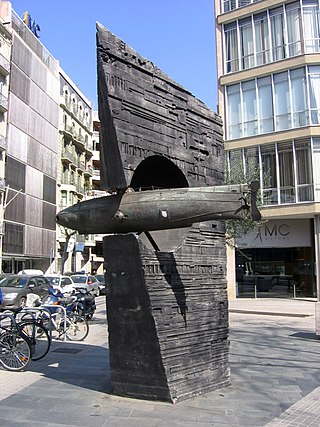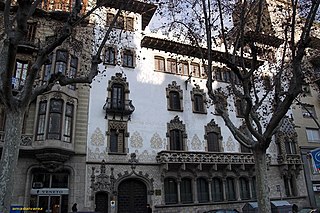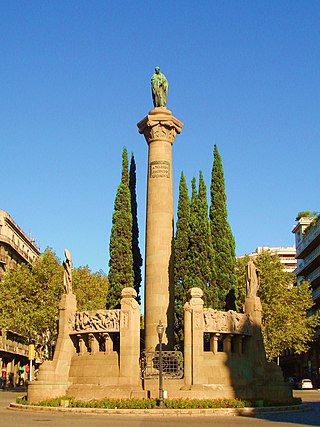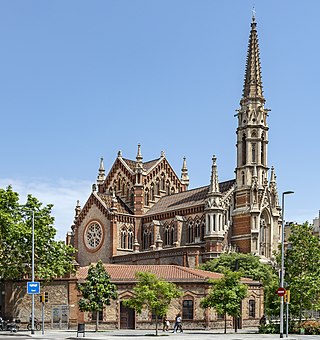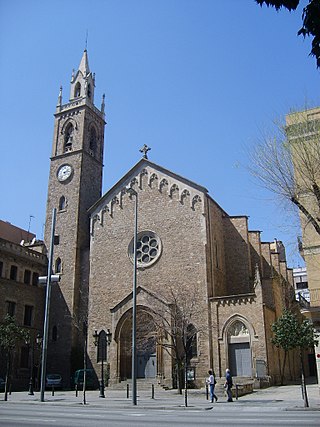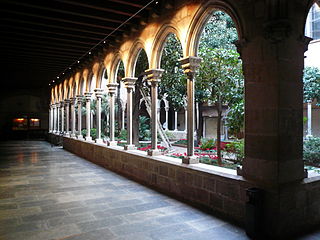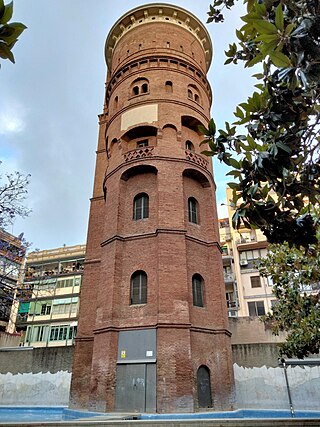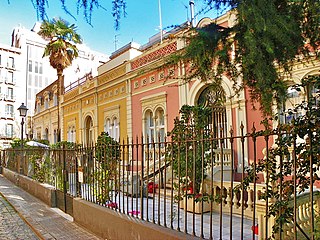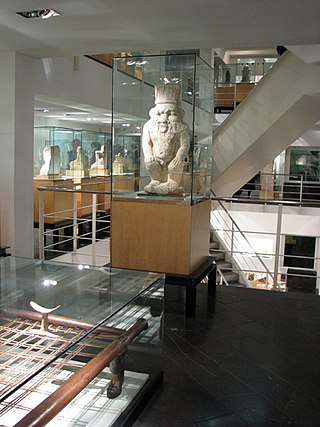Self-guided Sightseeing Tour #9 in Barcelona, Spain
Legend
Guided Free Walking Tours
Book free guided walking tours in Barcelona.
Guided Sightseeing Tours
Book guided sightseeing tours and activities in Barcelona.
Tour Facts
6.7 km
111 m
Experience Barcelona in Spain in a whole new way with our free self-guided sightseeing tour. This site not only offers you practical information and insider tips, but also a rich variety of activities and sights you shouldn't miss. Whether you love art and culture, want to explore historical sites or simply want to experience the vibrant atmosphere of a lively city - you'll find everything you need for your personal adventure here.
Activities in BarcelonaIndividual Sights in BarcelonaSight 1: Aquitania
The Cine Aquitania, formerly called Cine Infanta, was located at Avenida de Sarrià, 31-33.
Sight 2: Museum and Study Center of Sport Doctor Melcior Colet
The Museum and Study Center of Sport Doctor Melcior Colet is a facility dedicated to the promotion and exhibition of the most prominent in the development of the history of the sport in Catalonia in recent centuries. It is based in an Art Nouveau house built in 1911 by Josep Puig i Cadafalch the Casa Pere Company, which is located in Buenos Aires street, 56, Barcelona.
Wikipedia: Museum and Study Center of Sport Doctor Melcior Colet (EN)
Sight 3: Casa Sayrach
Casa Sayrach is a building located on Avinguda Diagonal and Carrer d'Enric Granados, in the Esquerra de l'Eixample neighbourhood of Barcelona, listed as a cultural asset of national interest.
Sight 4: Palau Robert
Palau Robert is a building on Barcelona's Passeig de Gràcia 107, the former private residence of Robert i Surís, an influential aristocrat, politician and businessman at the turn of the 20th century. It's now a government-run institution that hosts an exhibition centre with three halls, a concert hall and gardens as well as the Information Tourist Centre for Catalonia. In the 1936–1939 period, it was the site of the Generalitat de Catalunya's Ministry of Culture. After the Spanish Civil War, Robert's family regained the Palau, until its second purchase by the Generalitat de Catalunya in 1981, when it became a public building.
Sight 5: Baron of Quadras Palace
The Palau Baró de Quadras is a small modernista palace located in Barcelona on Avinguda Diagonal, equidistant from La Pedrera and Casa de les Punxes. It was built by the Catalan architect Josep Puig i Cadafalch between 1904 and 1906. In 1976 it was designated as Nacional National Historical Monument of Artistic Interest. Currently houses the main offices of the Institut Ramon Llull.
Sight 6: Casa Comalat
Casa Comalat is a modernist building located on Avenida Diagonal and Carrer de Còrsega in Barcelona's Eixample, listed as a Cultural Asset of Local Interest. It is the most important and personal work of the architect Salvador Valeri i Pupurull, who used characteristic cartilaginous and voluminous shapes inspired by Gaudí and with a Rococo-inspired decoration.
Sight 7: Jardins de Carme Biada
The Carme Biada Gardens are a green area inside the block of Roger de Llúria, Rosselló, Bruc and Còrsega streets in Barcelona's Dreta de l'Eixample.
Sight 8: Casa de les Punxes
The Casa de les Punxes or Casa Terradas is a building designed by the Modernista architect Josep Puig i Cadafalch. Located in the intersection between the streets of Rosselló, Bruc and the Avinguda Diagonal in the Barcelona Eixample area.
Sight 9: A Narcís Monturiol
A Narcís Monturiol or Ictineu is a monument by the artist Josep Maria Subirachs located at the intersection of Avinguda Diagonal and Carrer Girona in Barcelona.
Sight 10: Palau Macaya
The Palau Macaya is a modernist building at Passeig de Sant Joan, 108 in Barcelona, declared a national monument by the Ministry of Education and Science on January 9, 1976, along with other works by Puig i Cadafalch. In 1979 it became the first headquarters of the cultural centre of la Caixa, currently CaixaForum Macaya.
Sight 11: Monument a Mossèn Jacint Verdaguer
The monument to Mossèn Jacint Verdaguer, popularly known as El cuervo or La palmatòria, is a monument in the Noucentista style designed by the architect Josep Maria Pericas and crowned with a bronze statue by the sculptor Joan Borrell i Nicolau that represents the poet Jacint Verdaguer i Santaló. Llucià Oslé and Miquel Oslé are the authors of the reliefs that make up the frieze that surrounds the monument, alluding to several poems by Verdaguer. The monument is located in Plaça de Mossèn Jacint Verdaguer, at the intersection of Passeig de Sant Joan and Avinguda Diagonal.
Sight 12: Sant Francesc de Sales
The church and convent of Les Saleses is a complex formed by the church and the old convent of the Saleses nuns of the Order of the Visitation, located on the Paseo de San Juan in Barcelona, between the streets of Valencia and Aragón. It was designed by Joan Martorell i Montells. Work on the convent began in 1877 and the church was built between 1882 and 1885, corresponding to the current parish of Sant Francesc de Sales. The old convent was converted in 1943 into a school of the Marist Brothers. It is a work protected as a cultural asset of local interest.
Sight 13: Església Parroquial de la Concepció
The Basilica of the Immaculate Conception and Assumption of Our Lady is a basilica in Barcelona, Catalonia. The church originated as the Jonqueres Monastery, that was moved stone by stone when the land of the monastery was to be demolished. In 1879, a bell tower was added from the church of San Miguel which was also going to be demolished. The rectory stands on the left side of the bell tower and is a historicist building built at the end of the 19th century. On 20 February 2009, Pope Benedict XVI granted the title of minor basilica to the church, which became the eighth basilica in the city.
Wikipedia: Basilica of the Immaculate Conception (Barcelona) (EN)
Sight 14: Claustre de l'església de la Concepció
Santa Maria de Jonqueres was a monastery of nuns in the city of Barcelona that was on Jonqueres Street from the thirteenth to the nineteenth century, when the church and the cloister were transferred stone to stone in Aragon Street and today in Day is part of the Parish Church of the Conception in the Eixample district.
Sight 15: Torre de les Aigües de l'Eixample
The Torre de les Aigües is a construction listed as a Cultural Asset of Local Interest, located in the courtyard of the block of houses bounded by the streets of Roger de Llúria, Consell de Cent, Bruc and Diputació. Access is through an open passage at Carrer de Roger de Llúria, 56.
Sight 16: Passatge de Permanyer
Passatge de Permanyer is an alley that crosses the block of houses framed by Roger de Llúria, Pau Claris, Diputació and Consell de Cent streets, in the Eixample district of Barcelona. The passage, which honours the memory of Francesc Permanyer i Tuyets, is made up of a set of English-style huts. It was designed in a unitary way by Jeroni Granell i Barrera in 1864. The houses consist of a semi-basement and a raised ground floor, with a small garden in front. Conceived in an eclectic style, they incorporate classical elements and others of an Arabizing nature. The houses at the ends, in the same style, have one more floor, of the mansard type. This complex is included in the Barcelona City Council's catalogue of cultural assets of local interest. It is a work protected as a Cultural Asset of Local Interest.
Sight 17: Museu Egipci
The Egyptian Museum of Barcelona, located at Carrer de València, 284, belongs to the Clos Archaeological Foundation, a non-profit organisation founded in 1992 by the businessman Jordi Clos i Llombart. Its objective is the promotion and dissemination of art in general and archaeology, especially of ancient Egypt.
Sight 18: Parròquia de Sant Raimon de Penyafort
Santa Maria de Montsió was a monastery located in Carrer de Montsió and Plaça de Santa Anna in Barcelona, which has now disappeared, although the church and cloister of which were dismantled to be rebuilt on the Rambla de Catalunya, and after the Spanish Civil War, the latter was again dismantled and moved to Esplugues de Llobregat. Likewise, the Museu Nacional d'Art de Catalunya (MNAC) exhibits a funerary urn of Fra Francesc Botella, who died in 1376, from the monastery.
Sight 19: Jardins de Montserrat Figueras
The Montserrat Figueras Gardens are a green area in Barcelona's Antiga Esquerra de l'Eixample neighbourhood. They are dedicated to Montserrat Figueras, a soprano who was a reference in the vocal repertoire of the medieval, Renaissance and Baroque periods. This designation follows the line set by the Eixample District to feminize the district's nomenclature by incorporating women's names into block interiors and other spaces.
Share
Disclaimer Please be aware of your surroundings and do not enter private property. We are not liable for any damages that occur during the tours.
GPX-Download For navigation apps and GPS devices you can download the tour as a GPX file.
